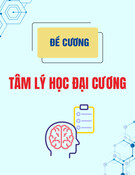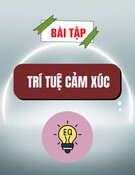
http://www.iaeme.com/IJM/index.asp 406 editor@iaeme.com
International Journal of Management (IJM)
Volume 7, Issue 7, November–December 2016, pp.406–417, Article ID: IJM_07_07_045
Available online at
http://www.iaeme.com/ijm/issues.asp?JType=IJM&VType=7&IType=7
Journal Impact Factor (2016): 8.1920 (Calculated by GISI) www.jifactor.com
ISSN Print: 0976-6502 and ISSN Online: 0976-6510
© IAEME Publication
JOB SATISFACTION OF FEMALE ASSISTANT
PROFESSORS IN PRIVATE COLLEGES WITH
REFERENCE TO WESTERN UTTAR PRADESH
Dr. Sandeep Kumar
Assistant Professor, Department of Statistics,
Hindu College, University of Delhi, Delhi, India
Dr. Sushila
Assistant Professor, Department of Sociology,
Km. Mayawati Govt. Girls P.G. College, Badalpur, Noida, India
ABSTRACT
The present study examined the relationships of a set of independent variables (Age,
Education, Types of College, Experience, Pattern of Remuneration, Marital Status, Type of
Family, Size of Family) with job satisfaction among Female Assistant Professors of private
colleges. The population in this study consists of 300 Female Assistant Professors from 28
colleges of Western Uttar Pradesh (Greater Noida, Ghaziabad and Meerut). The Female
Assistant Professors occupational job satisfaction scale was used for data collection, while t-
test, Chi-square test, Person’s coefficient of correlation and Likert’s scale are used for
statistical analysis. According to the findings of the analysis .It has been found that most of the
respondents are moderately satisfied with the factors influencing their job satisfaction and
also that their personal factors have some influence on their job satisfaction level.
Key words: Job Satisfaction, Female Assistant Professor, Marital Status, Qualification,
Remuneration, Private Colleges
Cite this Article: Dr. Sandeep Kumar and Dr. Sushila, Job Satisfaction of Female Assistant
Professors in Private Colleges with Reference to Western Uttar Pradesh. International Journal of
Management, 7(7), 2016, pp. 406–417.
http://www.iaeme.com/IJM/issues.asp?JType=IJM&VType=7&IType=7
1. INTRODUCTION
“Job satisfaction is an attitude that individuals have about their jobs. Job satisfaction results from their
perception of their jobs and degree to which there is a good fit between the individual and the
organization.” (Ivancevich et al. 1997)
It is one of the most researcher constructs in business science and organizational behavior for
various reasons. First, job satisfaction is relevant for scholars interested in the subjective evaluation of
work conditions (e.g. job characteristics. Schjoedt.2009).Second, job satisfaction is relevant for
managers and researchers interested in organizational outcomes. Such as organizational commitment

Job Satisfaction of Female Assistant Professors in Private Colleges with Reference to Western Uttar Pradesh
http://www.iaeme.com/IJM/index.asp 407 editor@iaeme.com
(Rutherford et al. 2009; Tsai and Huang.2008; Yousef.2002);extra-role behavior (Bowling, 2010).
Absenteeism (Tharenou. 1993), Sobtage chen and Spector, 1992) turnover or intentions to quit the job
(e.g., DeConinck and Stilwell. 2004); Rutherford et al., 2009).Third, Job Satisfaction is assumed to
have major implications as it is a multidisciplinary and everlasting relevant construct covering all
professions, work, jobs and contexts. Despite some controversy concerning this issue (Cropanzano
and Wright, 2001).
Several studies recognize job satisfaction as a key factor influencing productivity (Judge at al.,
2001: Ng et al., 2009; Schleicher et al., 2004) job satisfaction is an attitude that relates to overall
attitudes towards life, or life satisfaction (Ilies et al., 2009) as well as to service quality (Hartline and
Ferrel, 1996).
Thousands of studies examine people’s attitudes to their work experience as well as to specific
aspects of their jobs such as pay, supervision or autonomy (Spector, 1997). A person with a high level
of job satisfaction invariably has positive attitudes towards his/her job; while a person dissatisfied has
negative attitudes about his / her job. Conceptually, job satisfaction is a broad construct, regarding all
or most of the characteristics of the job itself and the work environment, which employees find
rewarding, fulfilling and satisfying, or frustrating and unsatisfying (Weiss. 2002). All these arguments
coverage on the general and started assumption that global job satisfaction is associated with a
complex set of interrelationships of tasks, roles, responsibilities, interactions, incentives and rewards
(Bowling et al., 2008).
Other researchers have examined the job satisfaction of university faculty. Blackbum, Horowitz,
Edington, and Klos (1986) have found that job related stress is positively related to job related strain
which then negatively impacts the health, life satisfaction, and job satisfaction of university faculty
and administrators. Personal factors, social support systems and health fitness of faculty and
administrators moderate the negative relationship between job strain, health, life satisfaction, and job
satisfaction (Blackbum, Horowitz, Edington, and Klos, 1986). In addition, Sorcinelli and near (1989)
found that the job satisfaction is positively related to faculty’s life satisfaction and their non-work
satisfaction.
A study of university academic staff by Pearson and Sciler (1983) focused on Herzberg (1959)
notion of context elements of the job, investigating academics’ levels of satisfaction with the
environment in which they work. They found that academics were generally more satisfied than
dissatisfied with their work environment, but that there were high levels of dissatisfaction with
compensation-related elements of the job (e.g., fringe benefits, pay, and performance criteria).
Pearson and Sciler commented that higher order needs tend to dominate in a university setting, where
academics generally have a high degree of control over content factors, including the process of
teaching and molding minds.
By contrast, academics generally have limited control over context factors, such as the university
environment in which the teaching and research processes take place. Because academics have high
degree of control over content elements perceptions of the job are particularly dependent on the
degree of satisfaction with the context factors.
A study by Moses (1986) tended to support the view that levels of dissatisfaction relate to context
factors, she found, for example, that faculty was dissatisfied with the under valuing of teaching
excellence in promotion decisions. She concluded that tenured and well-paid employment provides
satisfaction of the lower-order needs, whereas prestigious and autonomous work enables academic
staff to satisfy to a greater degree higher-order needs than is possible for the general population (e.g.,
esteem need the need for self-actualization).

Dr. Sandeep Kumar and Dr. Sushila
http://www.iaeme.com/IJM/index.asp 408 editor@iaeme.com
2. PURPOSE OF THE STUDY
The purpose of this descriptive co-relational study was to examine factors affecting job satisfaction of
Female Assistant Professors of western Uttar Pradesh private colleges. In addition, this study sought
to determine the overall satisfaction of faculty members.
3. OBJECTIVE OF THE STUDY
To guide this study the following research objectives were formulated:-
1. Describe selected demographic characteristics of the Female Assistant Professors.
2. Describe the important determinates towards job satisfaction.
3. Describe the relationship between job satisfaction and selected demographic variables.
4. Describe the relationship between job satisfaction and selected determinants of job satisfaction.
5. Describe the suitable measures for improving job satisfaction and suggest these measures to
Female Assistant Professors in private colleges.
4. METHODOLOGY
Job satisfaction is a complex phenomenon involving various personal, organization and social
aspects.
In methodological
portion an attempt to evaluate and explain the various methods and
procedures followed in order to unable the researcher to answer the research questions. A detailed
description of the methods and procedures followed in caring out the research is furnished under the
following heads.
4.1. Research Design
Exploratory curve descriptive research design has been used for conducting the study. The
exploratory aspect has been concerned with collection of basic information regarding the job
satisfaction of Female Assistant Professor.
4.2. Area of the Study
The micro level study has been taken up to identify the job satisfaction of Female Assistant Professors
in private colleges of Greater Noida, Ghaziabad and Meerut districts in Western Uttar Pradesh have
been selected as a specified focused area of the study.
4.3. Sampling Procedure
In the present study, a total number of 300 Female Assistant professors (i.e.100 from each area
Greater Noida, Ghaziabad and Meerut Districts.) have been selected through purposive random
sampling. Thus the purposive random sampling has been adopted for the investigation.
4.4. Techniques of Data Collection
In the present study, the data have been collected with the help of interview, interview schedule/guide
and questionnaire.
4.5. Tools and Techniques of Data Analysis Used
(i) The mean and S.D. have been used to identify the average scores and most appropriate average
towards level of job satisfaction of Female Assistant Professors.
(ii) The Chi-square test for independence, to test whether two or more attributes are associated or not.
(iii) The t-test, to test the significance variation in main scores.
(iv) Percentages, Ranking technique and Spearmen’s rank correlation coefficient have also been used
in the data analysis.

Job Satisfaction of Female Assistant Professors in Private Colleges with Reference to Western Uttar Pradesh
http://www.iaeme.com/IJM/index.asp 409 editor@iaeme.com
(v) Likert’s five point scale has been used to identify the overall job satisfaction.
5. ANALYSIS AND INTERPRETATION OF DATA
The data collected through the well structured questionnaire is analyzed and interpretation made on
the basis of such analysis is represented as below:-
Table 1
Personal Background of the Respondents
Course of Study Total
Traditional Professional Number %age
Age-Group
Below 25
25-34
35 & above
24
96
32
42
88
18
66
184
50
22.00%
61.33%
16.67%
Total 152 148 300 100%
Educational Qualification
Post Graduate (PG)
PG+NET
PHD
Ph.D + NET
50
52
20
30
48
50
21
33
98
102
41
63
32.00%
34.00%
13.00%
21.00%
Total 152 148 300 100%
Types of Colleges
Women’s
Co-educational
112
40
105
43
217
83
72.33%
27.67%
Total 152 148 300 100%
Experience (In yrs.)
5 and Below
6-10
More than 10
48
73
31
42
67
39
90
140
70
30.00%
46.67%
23.33%
Total 152 148 300 100%
Marital Status
Married
Unmarried
Widow/Divorcee
86
47
19
77
54
17
163
101
36
54.33%
33.67%
12.00%
Total 152 148 300 100%
Types of Family
Nuclear
Joint
97
55
102
46
199
101
66.33%
33.67%
Total 152 148 300 100%

Dr. Sandeep Kumar and Dr. Sushila
http://www.iaeme.com/IJM/index.asp 410 editor@iaeme.com
Size of Family
1-2
3-5
More than 5
16
124
12
12
128
8
28
252
20
09.33%
84.00%
06.67%
Total 152 148 300 100%
Mode of Pay
Fixed
Guest
Scale
101
8
43
105
15
28
206
23
71
68.66%
07.67%
23.60%
Total 152 148 300 100%
Figure 1
•
It is inferred that, cut of 300 selected sample, 61.33% belongs to the age of 25-34 years of which
majority are choosing traditional courses is their course of study and 22% pertains to the age of 25
years below of which majority are selecting their cause as professional.
•
It is inferred that the qualification of majority of the respondents in the sample is (PG+NET), and 32%
are post graduate.
•
Out of 300 sample size, 72.33% of population is serving in women’s college and only 27.67% of
population in co-educational colleges.
•
It is interested to note that 46.67% have put 6-10 years of teaching experience, 30% population falls
within 5 % below years and 23.33% are having more than 10 years of teaching experience.
•
It is inferred that 54.33% population is married and 33.67% are unmarried. Only 12% population
having status either widow or divorce.
•
66.33% of families are nuclear type and 33.67% are having joint type of family.
•
84% of respondents having 3-5 family members, 9.33% having 1-2 family members and 26.67% giving
more than 5 family members.
•
It is inferred that 68.66% having fixed or (consolidated) amount o salary.
•
23.6% are getting Assistant professor Scale salary and 7.67% are getting guest (or hourly base) salary.
0
20
40
60
80
100
Personal Background of the
Respondent
Series1
Series2
Series3
Series4


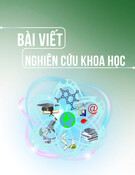


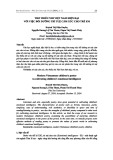
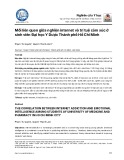
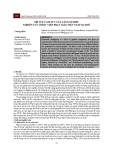
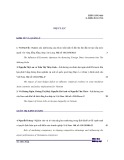

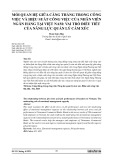
![Tài liệu Tâm lý học lâm sàng trẻ tự kỷ [chuẩn nhất]](https://cdn.tailieu.vn/images/document/thumbnail/2025/20251205/namthangtinhlang_04/135x160/79221764992570.jpg)



![Câu hỏi ôn tập Tâm lý học quản lý [chuẩn nhất]](https://cdn.tailieu.vn/images/document/thumbnail/2025/20251125/hathunguyen04er@gmail.com/135x160/25191764124376.jpg)
![Cẩm nang chăm sóc và nuôi dạy trẻ tăng động giảm chú ý [chuẩn nhất]](https://cdn.tailieu.vn/images/document/thumbnail/2025/20251118/kimphuong1001/135x160/4241763431998.jpg)

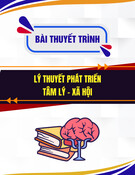
![Sổ tay Hướng dẫn tự chăm sóc trầm cảm [chuẩn nhất]](https://cdn.tailieu.vn/images/document/thumbnail/2025/20251029/kimphuong1001/135x160/3711761720335.jpg)
![Đề cương Tâm lý học xã hội [chuẩn nhất]](https://cdn.tailieu.vn/images/document/thumbnail/2025/20251028/c.dat0606@gmail.com/135x160/99271761707421.jpg)
![Câu hỏi ôn thi Nhập môn khoa học nhận thức [chuẩn nhất]](https://cdn.tailieu.vn/images/document/thumbnail/2025/20251021/aduc03712@gmail.com/135x160/48471761019872.jpg)

![Đề cương môn Tâm lý học sinh tiểu học [chuẩn nhất]](https://cdn.tailieu.vn/images/document/thumbnail/2025/20251007/kimphuong1001/135x160/51781759830425.jpg)
